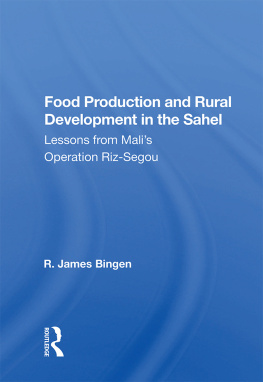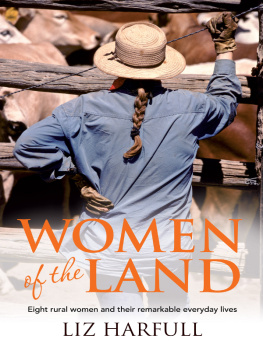
Women, Land Rights and Rural Development
The failure to include gender in the economic history of rural development has radically limited our understanding of the tenure transformations that disrupted and transformed the lives of rural women and men in the modern world. This study is unique in its focus on female economic agency in comparative historical perspective. It presents the apparently disparate cases of seventeenth-century England, twentieth-century Russia and the Soviet Union, and twentieth-century Kenya, as their top-down modernization projects were implemented in similar fashionparticularly in the case of women. The female half of the population was largely absent from contemporary economic databases, but nevertheless stereotyped as obstacles to rational economic decision-making. By introducing rural women and their innovations into male-centered narratives of economic history, this book lays the foundation for a more demographically balanced and realistic understanding of rural behavior and rural development. In this study, womens labor and land claims are the lens through which both female agency and the delegitimizing of womens land claims become more visible. Both policy-makers and their leading critics deployed virtually identical language to describe backward, unruly, and physically unsightly peasant women.
Esther Kingston-Mann is Ford Service Professor Emerita in the Department of History at University of Massachusetts Boston.
Routledge Research in Gender and History
21Women in Higher Education, 18501970
International Perspectives
Edited by E. Lisa Panayotidis and Paul Stortz
22Gendering the Settler State
White Women, Race, Liberalism and Empire in Rhodesia, 19501980
Kate Law
23Women in Magazines
Research, Representation, Production and Consumption
Edited by Rachel Ritchie, Sue Hawkins, Nicola Phillips and S. Jay Kleinberg
24New Perspectives on European Womens Legal History
Edited by Sara L. Kimble and Marion Rwekamp
25Gender and the Representation of Evil
Edited by Lynne Fallwell and Keira V. Williams
26Transgressive Women in Modern Russian and East European Cultures
From the Bad to the Blasphemous
Edited by Yana Hashamova, Beth Holmgren and Mark Lipovetsky
27Catastrophe, Gender and Urban Experience, 16481920
Edited by Deborah Simonton and Hannu Salmi
28Women in International and Universal Exhibitions, 18761937
Edited by Myriam Boussahba-Bravard and Rebecca Rogers
29Shame and the Anti-Feminist Backlash
Britain, Ireland and Australia, 18901920
Sharon Crozier-De Rosa
30Women, Land Rights and Rural Development
How Much Land Does a Woman Need?
Esther Kingston-Mann
Women, Land Rights, and Rural Development
How Much Land Does a Woman Need?
Esther Kingston-Mann
First published 2018
by Routledge
711 Third Avenue, New York, NY 10017
and by Routledge
2 Park Square, Milton Park, Abingdon, Oxon OX14 4RN
Routledge is an imprint of the Taylor & Francis Group, an informa business
2018 Esther Kingston-Mann
The right of Esther Kingston-Mann to be identified as author of this work has been asserted in accordance with sections 77 and 78 of the Copyright, Designs and Patents Act 1988.
All rights reserved. No part of this book may be reprinted or reproduced or utilised in any form or by any electronic, mechanical, or other means, now known or hereafter invented, including photocopying and recording, or in any information storage or retrieval system, without permission in writing from the publishers.
Trademark notice: Product or corporate names may be trademarks or registered trademarks, and are used only for identification and explanation without intent to infringe.
Library of Congress Cataloging-in-Publication Data
Names: Kingston-Mann, Esther, author.
Title: Women, land rights and rural development : how much land does a woman need? / by Esther Kingston-Mann.
Description: New York, NY : Routledge, 2018. | Series: Routledge research in gender and history ; 30 | Includes bibliographical references and index.
Identifiers: LCCN 2017045203 (print) | LCCN 2017050833 (ebook) | ISBN 9781315170138 (ebook) | ISBN 9781138048553 (hbk. : alk. paper)
Subjects: LCSH: Land tenureHistory. | Rural developmentHistory. | Rural womenHistory. | Women landownersHistory. | Women in agricultureHistory.
Classification: LCC HD1251 (ebook) | LCC HD1251 .K57 2018 (print) | DDC 333.3082dc23
LC record available at https://lccn.loc.gov/2017045203
ISBN: 978-1-138-04855-3 (hbk)
ISBN: 978-1-315-17013-8 (ebk)
Typeset in Sabon
by Apex CoVantage, LLC
To Jim Mann, who understood more about rural women and development than any poet in the world. And to my daughter Larisa Kingston-Mann.
An Evolution
In one way or another, this booklike my other writingsis primarily concerned with the troubled relationship between modernizers (Marxists, anti-Marxists, advocates of enclosure, colonials, Stalinists, and shock therapists) on the one hand, and on the other, the rural men and women they targeted for change. Its subtitle is a play on Tolstois short story: How Much Land Does a Man Need?
My first book, Lenin and the Problem of Marxist Peasant Revolution (1983), documented some of the limitations that centuries-old traditions of anti-peasant bias placed upon the research and analyses produced by Marxists and anti-Marxists; it considered as well the process by which Lenin came to break with them. The book chapters Rural Communes and Economic Innovation (Peasant Economy, Culture and Politics of European Russia, 18001921, 1990) and Statistics, Social Change and Social Justice: The Zemstvo Statisticians of Pre-Revolutionary Russia (Russia in the European Context,17891914, 2005) considered the largestbut meagerly researchedempirical database on the economic behavior of Russian peasants and the evidence of commune-based innovation that it contained. In Search of the True West (1999) and Deconstructing the Romance of the Bourgeoisie (2006) detail Russian obsessions with Western economic models at the expense of systematic empirical research on the majority of their own rural population. The book chapter Claiming Property: The Soviet-era Private Plots as Womens Turf (Russia in the European Context, 17891914) focuses on the labor and agency of rural women, the social group most strikingly absent from Russian social histories. Transforming Peasants (Cambridge Modern History of Russia and the Soviet Union (2006) surveys twentieth- and twenty-first-century government efforts to eliminate the ubiquitous and supposedly backward peasant commune. Their existence as security-granting institutions capable of mobilizing their members for resistance to state policy made them a compelling target for advocates of tenure transformation before, during, and after the Soviet era. The Romance of Privatization (The Changing Properties of Property





